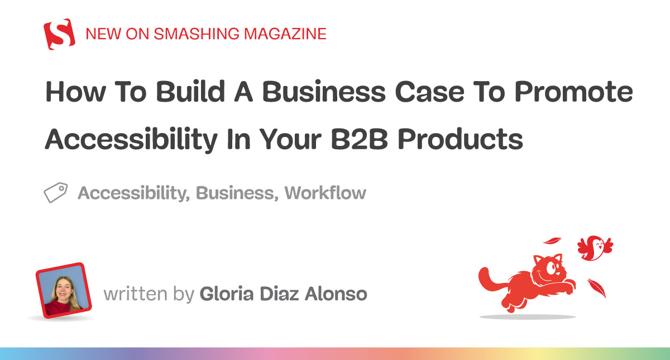Smashingmagazine
1w
251

Image Credit: Smashingmagazine
How To Build A Business Case To Promote Accessibility In Your B2B Products
- When promoting accessibility in B2B products, building a strong business case is crucial for stakeholder buy-in and support.
- Simply presenting the benefits of accessibility may not convince stakeholders; a solid business case is necessary.
- Key questions to address in a business case include why resources should be allocated to accessibility, what needs to be done, expected outcomes, cost considerations, and decision-making factors.
- Consider the impact of regulations like the European Accessibility Act, Web Accessibility Directive, and Americans with Disabilities Act, which can affect your business.
- Highlight accessibility as a competitive advantage that can attract strategic clients and differentiate your products from competitors.
- Demonstrate the value of accessibility by showcasing how it benefits all users, not just those with disabilities.
- Emphasize the overlap between accessibility improvements and best practices for usability, design, and development.
- For new products or features, an accessibility-first approach helps minimize issues and reduce future remediation costs.
- For existing products, start by analyzing the Design System, focusing on high-impact areas, and gradually integrating accessibility improvements based on user needs.
- Visualize the key components of your strategy to help decision-makers understand the importance and impact of investing in accessibility.
Read Full Article
15 Likes
For uninterrupted reading, download the app